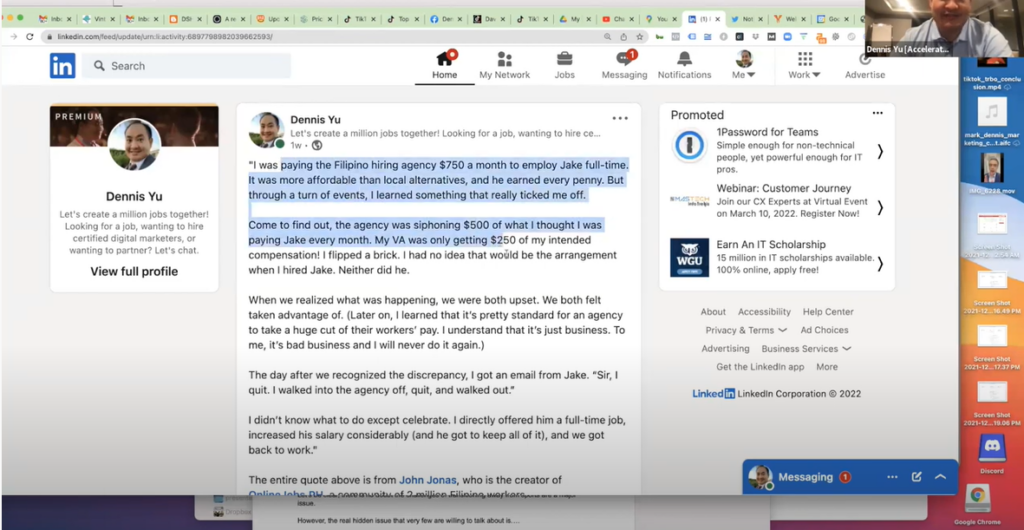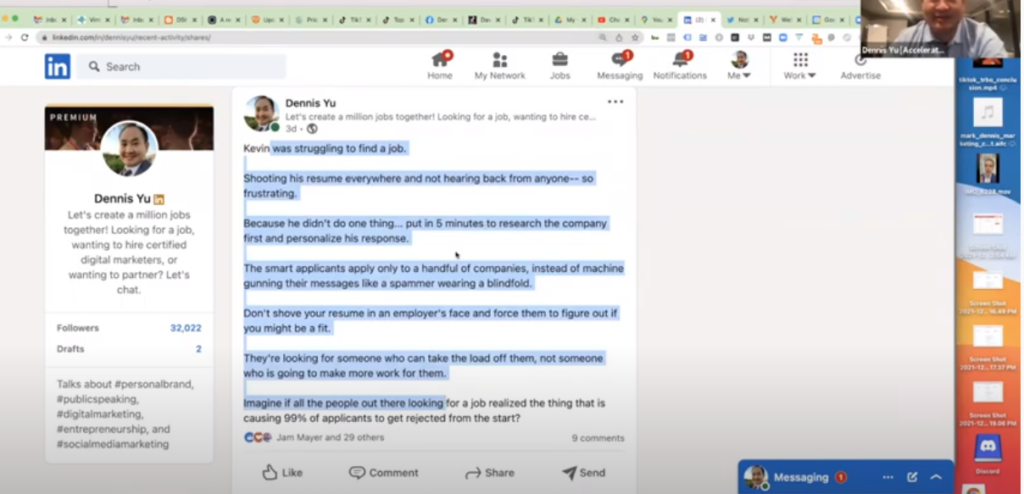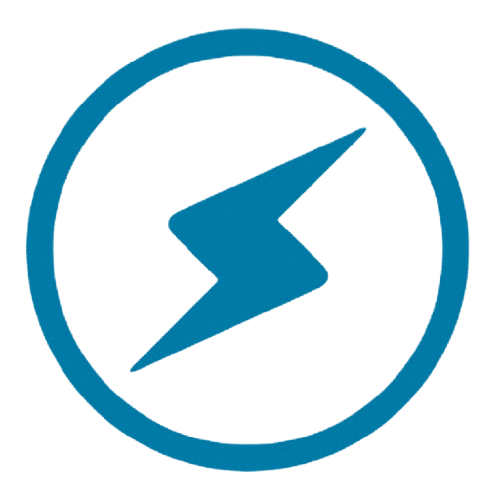
Everyone is trying to game LinkedIn these days to increase their engagement. Because of this, misconceptions abound.
For example, have you heard any of these?
- Your Next Post Will Displace Your Previous Post. That’s Not True.
- You Should Post at 10:00 a.m. Every Thursday. False.
- You Should Post With Three Hashtags. That Won’t Help.
Here are some tips that will benefit you:
1. Build a Power LinkedIn Profile
- Your Profile Picture Should Be on Point. If your picture is grainy, run it through Gigapixel. Your face should take up most of the space in your profile picture.
- Use Emojis. They put them there for a reason.
- Don’t Use Too Many Acronyms.
- Deploy the XYZ Model in Your Summary.
Your summary should say, “I help X achieve Y via Z.” You don’t want to come off as a general consultant. You want to show yourself as a specialist in your field instead.
2. Write Content in a Way That Gets Engagement
Your posts shouldn’t be like you’re trying to get people to buy using fear, uncertainty, and doubt, nor should you use landing page techniques that have nothing to do with sharing your expertise and caring.
a. Launch Polls
Make polls a simple question. Don’t make it something that people have to think about.
The more people you get to vote, the more reach and engagement you will get as people get into discussions.
- How Do You Introduce a Poll? Actively ask people for their feedback. Please don’t make it like you have all the answers because it shuts off the conversation. You might be the authority on something, but make it open so that people feel you want to hear their opinion.
- When Someone Comments, Reciprocate. You can comment by asking the person a question, but you don’t want to ask questions all the time because it will feel heavy. When you comment back, it generates a notification that sends a signal to the algorithm that measures engagement.
b. Don’t Use Hashtags
Tags don’t matter on LinkedIn. You can tag other people but don’t tag more than two. Don’t tag 50 people thinking that the more people you tag, the more people will look at your stuff. That’s a spammy thing that will only get you in trouble. You can get away with it once or twice, but it’s a failed strategy in the long term.
c. Use a Storyteller Strategy
LinkedIn will only show the first couple of lines, so start with something that will get people’s attention, urging them to click the “See More” button.
- End it with something positive and thoughtful.
- Reframe how you post.

Instead of, “Hey, if you want to get a job…,” turn it into a story like, “Kevin was struggling to find a job, shooting his resume everywhere.” Make sure you personalize the first sentence by showing that there’s emotion involved.
- Instead of Putting Quote Cards, Infographics, or Shared Posts, Put Pictures and Videos of Yourself.
When you share a post, it doesn’t have much reach from the LinkedIn algorithm. Unlike Facebook, it creates the shared post as a new post which kills engagement. If you want to share someone else’s stuff, copy it and make it a new post. Don’t hit the share button.
- Instead of Editing a Post, Make a New Post Instead.
Editing posts tend to hurt the reach of those posts.
- Don’t Do Testimonials. Show Success Stories Instead.
Highlight other people– clients, participants, students, etc., people you’ve helped, but in a way that doesn’t look like you’re trying to fish for a testimonial. Feature people to elevate them instead of trying to get them to elevate you. Build your authority by highlighting that expertise.
Need to learn more on how exactly one creates ‘great content’? Check out our content marketing course here.
3. Generate High Authority Moments
Showing your connection with a well-known person is the most effective way of driving conversion. One of the easiest ways of doing that is through podcasting.
Show your audience that you are legit. Legitimacy comes from three different angles of authority that convey trust:
- Who am I with?
- Where are we?
- What am I sharing?
4. When Shooting Video, Check the Camera and Mics
Shoddy camera work and bad audio work against you when you’re shooting video. Good audio is more important than a video with good quality. If your audience can’t hear what you’re saying, they’ll be more likely to leave you and miss the important message or call to action you’re trying to relay.
5. Make Sure Hyperlinks Are Linked Correctly
Link to your content and ensure the links are going to the right places. Improper linking causes disappointment in your audience and could reflect poorly on your business. Make sure your link fits with your call to action and is specific. Tell people what they’re going to get when they click the link. They’ll be more likely to click it if you do and find you more trustworthy.
6. Don’t Post Links to Other Sites
Do not, for example, post a YouTube link on LinkedIn. Do you think LinkedIn wants to promote YouTube or Facebook on its platform? Heck no.
LinkedIn, like any other social media account, doesn’t want people to leave LinkedIn, just like Facebook doesn’t want people to leave Facebook, so try to get maximum engagement on the platform itself.
7. Distribute Content for $1 a Day
Spend a dollar a day for seven days to test your content. The system will try to get you to spend more money but don’t give in.
Boosting posts is always an option, but remember, it’s not boosting posts that drive engagement but having great content that’s worth boosting.
8. If Your LinkedIn Posts Get No Engagement, Determine the Reason
If your post doesn’t drive engagement in the first hour or two, that’s usually a signal to the algorithm that your stuff shouldn’t get any more.
Try to discover the reason for the lack of engagement. What are other business leaders posting, and what kind of posts are driving lots of engagement for them? Are you connected to the right audience?
9. Keep an Open Mind When Someone Copies Your LinkedIn Post
Treat it as a compliment. That’s free marketing for you. You want them to copy because it builds up your brand.
Those people copying your content spend money and have their audience build your brand across all these other channels.
LinkedIn is by far the world’s largest professional networking platform, and it’s one of the most influential, with millions of members. Business leaders worldwide use the site to keep in touch with business associates, clients, and co-workers.
This platform can do so much more if you know how to use it. Follow these steps, and you’ll be well on your way to using LinkedIn to its fullest potential.
Want to follow proven processes to increase your visibility, grow your awareness, supercharge engagement, and drive leads and conversions? Then find out more about the Content Factory.
